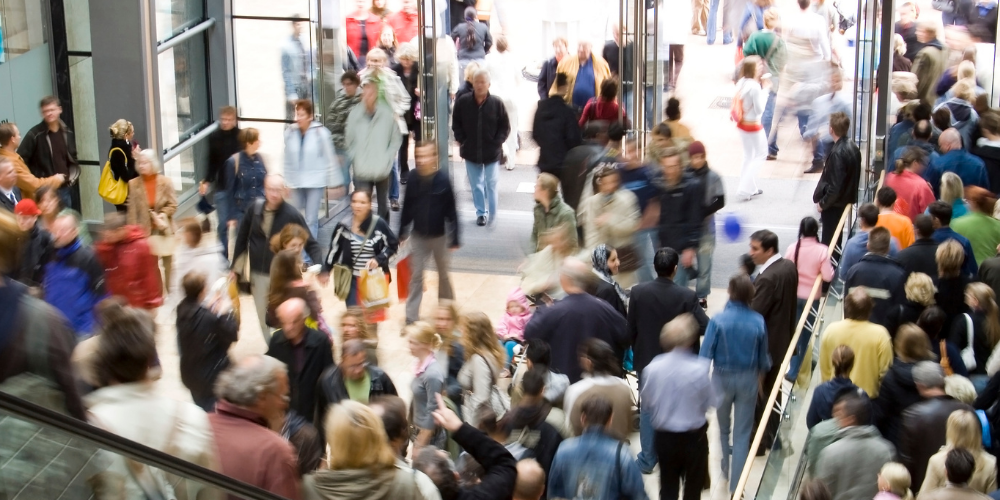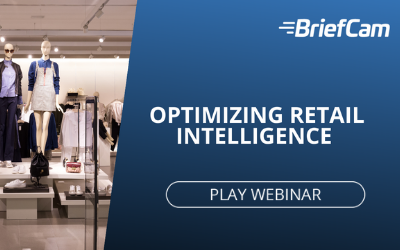Optimize the 2020 Holiday Retail Season with Video Analytics

Improving in-store security and experiences with crowd, queue and loss prevention
Crowded stores, long queues, and inventory theft; all of these are common problems that retailers try to prevent year-round, but especially during the holiday shopping season, which starts before the end of October. Retailers will be keen to fill their stores with shoppers as much as possible, to capitalize on the 2020 holiday season, given the setbacks they’ve experienced during the COVID-19 pandemic (which still persists). And, because of the pandemic, some shoppers may be reluctant to shop in brick and mortar stores or may want only in-store or curbside pickup. Others may reduce their spending drastically, due to the current economic recession or uncertainty about the economy in 2021. That means retailers must find every opportunity to protect their inventory, optimize their store operations, and convert shoppers into paying customers who patronize the store again and again.

Smart retailers don’t rely solely on advertising and good sales associates to increase their bottom line; most of them turn to a plethora of technology solutions, whether to help them improve advertising, track inventory and revenue, or improve customer service. When considering their options, retailers should prioritize those technologies that help them get more value out of an existing technology investment, such as video analytics software, for example, which maximizes video surveillance networks already in use.
Register for the Upcoming Webinar: Optimizing Retail Intelligence for Maximum Customer Engagement
In retail, video surveillance traditionally has been used for security purposes, such as preventing and investigating criminal incidents or employee and guest behavior. While many stores make these investments, more often than not most video footage is never reviewed. Experts estimate that 99% of video footage is never seen. That’s not surprising, because manually reviewing video footage is cumbersome, time-consuming and inefficient; even if there were enough video analysts to do the task, the human eye could never log every event accurately, or collect trend data over long periods of time.
The wealth of untapped information in video footage can be accessed and applied based on video content analysis technology: Powered by Artificial Intelligence (AI), video analytics software processes video to identify and classify objects in the video footage (people, vehicles, and other items), and then index them. This enables operators to quickly and easily search video — recorded or in real-time — by filtering on identifying criteria, such as gender, size, color, speed, path, direction, and dwell time.
Apply operational intelligence
Video analysis software aggregates video data over time to provide business intelligence that helps management understand trends, make decisions, and develop strategies and contingency plans. To better plan their security and merchandising, retail store managers need information about customer demographics, store navigation patterns and display interactions By translating video metadata into business intelligence dashboards and visualizations, managers can uncover critical data and make better, more informed decisions about staffing, merchandising, and public safety. This year’s data can be leveraged to predict next year’s supply and demand.
Managing crowds & maximizing store layout
One aggregated video intelligence can be used to benchmark patterns and norms, it can also be used to develop alerting logic when anomalous behavior is detected: By configuring rule-based alerts for factors, such as expected people and object counts in an area (store aisle, parking lot, or other space), when normal thresholds are exceeded, the system can send an automatic real-time alert so operators can assess the situation and respond, as appropriate. For example, to prevent or resolve long queues at a checkout line, a video analytics system can alert when the number of people in a checkout area is growing or has exceeded the norm. Managers can then decide whether to immediately deploy additional staff or – in the long term – whether posting signage to direct customers to other checkout registers will be effective.
Similar to queue control, video analytics software can also be applied to monitor and manage safe building occupancy through reporting dashboards and configuring rule-based alerts to be notified when pre-defined safe occupancy thresholds have been exceeded – whether because of everyday security and safety regulations, but especially so with COVID pandemic reopening recommendations and restrictions.
In short, while a busy store is key performance indicator; a crowded store is not. Video analysis enables store managers to answer questions such as, where do bottlenecks occur? Which product displays draw the greatest number of customers? And, what is the average length of time that customers dwell at key product displays? By visualizing the data recorded by video surveillance, video content analysis enables operators to uncover customer paths and volume over an extended period of time (hourly, daily, weekly, etc.) and review this intelligence through customized dashboard reports and heatmaps. Aggregated analytics can demonstrate common dwell patterns, interactions with product displays, as well as shopper demographics. Using this quantified data, managers and buyers can optimize the decision-making processes around store layout design and product placement, both of which can improve the customer experience and increase revenues.
Provide VIP customer service
Increasingly, retail stores are rolling out the digital red carpet for customers who opt into brand loyalty programs and seek VIP treatment. Consenting customers’ photos can be added to a digital photo watchlist and face recognition can be used to notify managers when these customers enter the store, verify the face match, and activate staff to immediately engage with these customers. The retailer can also integrate VIP customer visit data with digital marketing efforts and, following the visit, target the customer with follow-up advertising and offers to encourage ongoing brand engagement and loyalty.
With the ability to leverage face re-identification, retailers can recognize unique visitor traffic to the store for measuring repeat and bounced visitor traffic, as well as analyzing and quantifying aggregate, employee and unique guest traffic. By differentiating between recognized employees and anonymous guests, video analytics-driven re-identification enables retailers to assess and report on visitor counts that exclude staff and give more accurate representations of unique visit duration and repeat visitor traffic.
Investigating criminal activity & understanding incidents
Facial recognition technology can also be used to identify customers who have committed crimes in the store in the past, such as shoplifters. Even without the ability to recognize faces or identify suspects, deep-learning based video search enables operators to apply and combine filters to accelerate video review and investigation, and pinpoint shoplifters or vandals with speed and precision. This is helpful for reviewing and understanding less offensive events, as well, such as medical incidents and consumer behavior.
Increasing situational awareness and prevention
Sometimes unsavory behavior can be prevented before it takes place by increasing situational awareness and responding quickly to environmental changes. Retailers can proactively prevent inventory losses and protect employees, property and customers, by leveraging intelligent video surveillance to maximize on-site monitoring and emergency response in real-time based on rule-based alerting for the detection of pre-defined behaviors or people of interest.
By leveraging video content analytics, smart retailers can gain a competitive edge and derive more value from their existing video surveillance systems at the time of year when the stakes are highest and the ROI of intelligently applying technology can be felt for months to come.
Signup to receive a monthly blog digest.